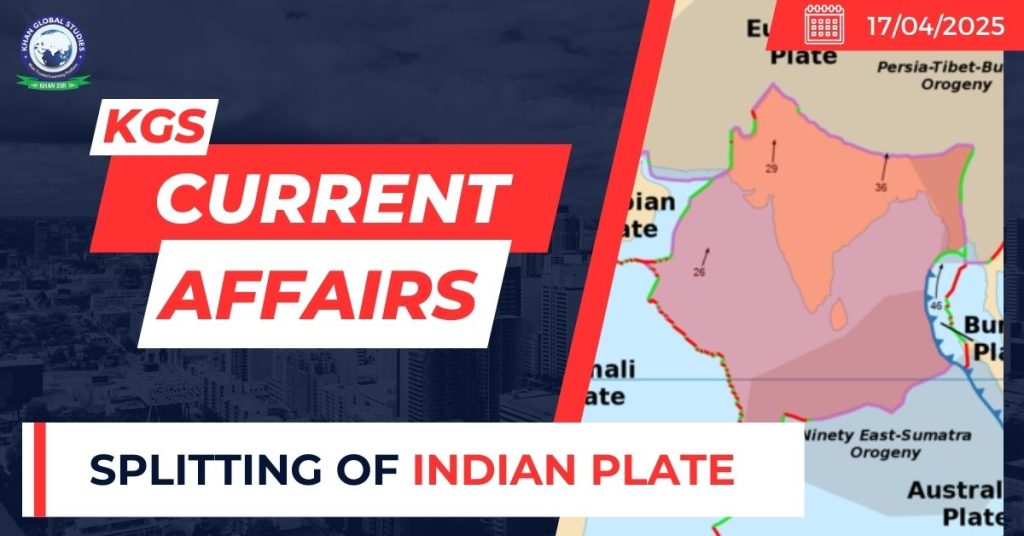Context:
Recent findings reveal that the Indian Plate is splitting into two, a phenomenon that could reshape the region’s geological landscape with delamination as the underlying cause.
What Is Delamination and Its Implications

The Himalayan mountains formed about 60 million years ago when the Indian Plate collided with the Eurasian Plate, pushing rock upwards to create the world’s highest peaks.
These mountains, still rising due to the ongoing northward movement of the Indian Plate, are the source of frequent earthquakes and landslides in the region.
As the Indian Plate moves northward at approximately 5 cm per year, it converges with the Eurasian Plate, causing compression, uplift, and the folding of Earth’s crust, which drives seismicity and mountain-building processes.
Recent discoveries show that the Indian Plate is not only colliding with the Eurasian Plate but is also splitting apart beneath the surface.
Studies have revealed that part of the Indian Plate is undergoing Delamination, where its dense lower portion detaches and sinks into the Earth’s mantle.

Researchers detected the delamination by analyzing:
- Seismic waves from earthquake activity
- Helium isotope levels in Tibetan hot springs
These analyses revealed a previously hidden vertical tear in the Indian Plate, providing strong evidence of the delamination process.
The discovery suggests that the Indian Plate has varying thickness and characteristics across its surface, and highlights the dynamic and complex nature of the processes driving tectonic shifts.
Implications:
- Delamination may significantly increase the risk of earthquakes in the region. In highly compressed zones like the Himalayas, multiple tears in tectonic plates can redistribute stress across the crust.
- The Tibetan Plateau, already a seismic hotspot, may face heightened instability.
- The Cona-Sangri Rift, a major fracture in the region, could be directly linked to this delamination, potentially triggering larger and more frequent earthquakes.

